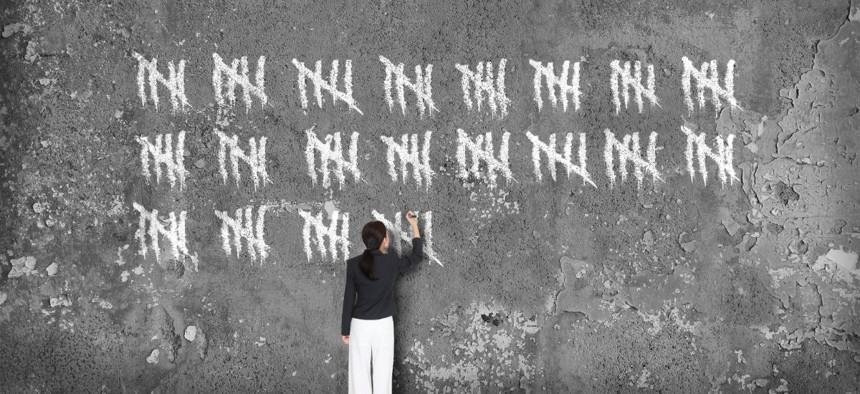Trump’s Next 1,360 Days
The administration has provided some useful clues as to how this is going to play out.
The scorekeeping over President Trump’s first 100 days in office has grown, of course, completely out of hand. If we’ve learned anything about his presidency, it’s that if you’ve seen one day of his term, you’ve seen one day of his term. One day does not predict the next. What really matters is not Trump’s first 100 days but the 1,360 days to come.
In predicting how those days may unfold, 10 rules from the president’s first 100 days provide some useful clues:
- It’s easy to claim corporate experience without having had to answer to an outside board of directors. Trump has struggled to build relationships with members of Congress and Republican Party leaders. Whispers from Capitol Hill range between “huh—really?” and “no way!” That’s little wonder. The board of his real estate firm was a small group of insiders, where responsibility flowed from the top and not from the board. His problems with Congress flow from his lack of experience in dealing with a real board of directors, private or public. It may be awhile before he makes peace with the idea of having to answer to anyone, and the frictions with the Hill aren’t going to ease any time soon.
- It’s possible to make a lot of waves without passing laws. The blizzard of executive orders more than made up for the lack of wintertime snow in Washington. Trump is on pace to out-order every president since Reagan in an effort to follow through on campaign promises. He is likely to continue pushing his agenda from the White House if battles with Congress bog down his priorities.
- Announcing isn’t doing. On the other hand, signing executive orders doesn’t automatically produce results. The courts have derailed Trump’s immigration orders. Most of his other executive orders have been of the “go forth and plan” variety. He’s put some points on the board—he’s approved the XL pipeline and rolled back some Obama-era rules. If the president needs to create more distractions from future policy disasters, expect him to sign many more executive orders.
- If something proves too difficult to do, announce that you intended to do something else. In the unimaginable flurry of Tweets, media events, threats, feints, and pledges, it’s almost impossible to remember what Trump promised to do and when he promised to do it. Build a wall and make the Mexican government pay? What kind of wall? Well, we’ll make them pay. Or we’ll make them pay later. Or we’ll build it now and send them a bill. Or we’ll plan it now and build it later. Or we’ll come back to the building in a few months. Or, since no one really expected me to do it, I’ll put in enhanced border security. Along with more extreme vetting, which will happen will more Customs and Border Protection agents, after the agency works off the big backlog of vacant positions. This can go on forever, because . . .
- Talking tough is a big part of the game. Trump’s supporters want results. But, at least in the early going, they have been content with a commander in chief who talks tough against people who scare them or have offended them. The president’s base has remained remarkably stable and firmly on board.
- The real problems lie elsewhere. The base believes Trump isn’t personally responsible for his problems in getting things done. The fault lies with Democrats who obstruct, with the media who lie, and with disloyal Republicans who don’t deliver for him. The blame game will continue for the foreseeable future.
- Follow-through is someone else’s responsibility. When problems get tough, the tough problems get going—to someone else. The Republicans hope to repeal the Affordable Care Act and reform the health insurance market by passing the really hairy problems on to the states. The administration’s trillion dollar infrastructure plan wouldn’t actually invest $1 trillion of federal cash in job-stimulating projects, rather it would scatter bait on the waters and hope to lure enough big fish to fund big projects.
- Failure to deliver is someone else’s fault. The beauty of rule 7 is that all problems are someone else’s. If states cut back on funding for pre-existing conditions or scale back coverage for nursing homes, that’s on them. If a big infrastructure plan doesn’t bring a new bridge to your town, that’s on the investors and on state and local governments. Add rule 5, with more tough talk, and Trump can duck accountability for a long time.
- The brand is (still) the thing. It’s important to remember that Trump rode to the presidency not as a corporate executive who had invented a new smartphone or built new cars. His most important product was his personal brand, which he licensed to others and in doing so, made a lot of money. His brand matters most, which is why he gets up in the morning and watches Fox News, eagerly follows the day’s press briefing with Sean Spicer, and goes to bed after talking with friends about outrages on the evening news shows. It’s all about the Trump brand. It always will be. And what helps or hurts the brand will play an outsized role in presidential decisions—and national policy.
- Keep up the crazy. One universal reaction to Trump’s first weeks in office was exhaustion. Politicians, pundits, and ordinary people didn’t think it was sustainable. They were wrong. The Twitter torrent has become routine. Shows like “Saturday Night Live” and comedians like Stephen Colbert are riding the anti-Trump train to record ratings. We’ve discovered that we can keep up the crazy. Perhaps for a very long time.








